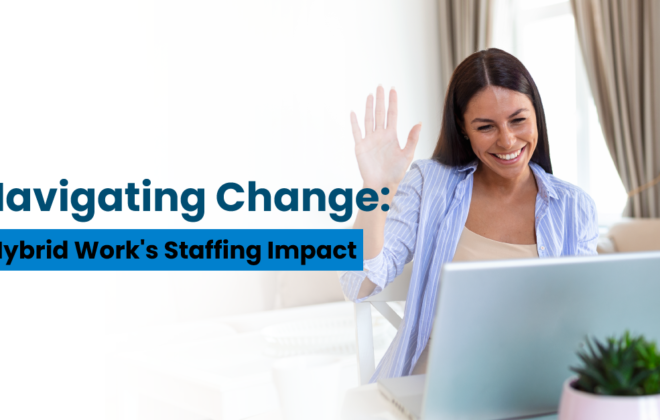5 Innovative Ways to Manage Employees’ Mental Health During the Pandemic
As World Mental Health Day is around the corner, we feel it is the right time to discuss the correlation between mental health and remote work. The global pandemic has forced a huge chunk of the workforce across the United States to work remotely. Although working from home will save lives by limiting the transmission of coronavirus, it does affect the overall well-being of employees.
The crisis has brought the spotlight on mental health issues like anxiety, stress, and depression, which stems from being confined in a limited space of your home. Stress and poor mental health can negatively affect employees in ways like,
- Poor job performance
- Lack of engagement & motivation
- Gap in communication with co-workers
- Decline in physical health
Luckily, the connection between employees, working from home, and stress is well researched and studied. According to a report by the UN, about 41% of remote workers experienced high-stress levels than just 25% of office-going workers. Ginger, a leader in on-demand mental healthcare found,
- 88% of workers were experiencing moderate to extreme stress in the past 4 to 6 weeks
- 69% of employees said the COVID pandemic is the most stressful time of their lifetime
- 91% of the remote working employees reported undergoing moderate to extreme stress
- 43% of employees reported an adverse effect on their physical health due to work-related stres
![]()
Due to the constant surge of WFH workers in the ongoing pandemic, it is high time to rework the strategies to improve employee’s overall wellbeing. But conventional approaches to managing employee stress such as outdoor activities, casual friday, company retreats, etc. are no longer feasible.
Instead, organizations should now devise new strategies and opt for effective tech solutions to manage employee’s mental health which is digitally accessible from home. Here, we have mentioned five ways that companies can use to assist employees’ well-being and health during the crisis.
- Leverage Technology to Promote Mental Health
- Host Virtual Social Events
- Use This Opportunity to Educate
- Be Transparent Through Communication
- Train Employees for Effective Online Collaboration
1. Leverage Technology to Promote Mental Health
Technology is one of the best enablers when it comes to influencing a mental state. Remote workers depend on video conferences and collaboration tools to connect with their co-workers and discuss work. Almost 20% of the working-class population has reported having one of the many mental illnesses, yet they are still unsure if their employer provides mental health resources.
It is high time to use technology to offer a variety of mental health resources such as on-demand access to mental health programs, on-call licensed counselors, virtual education, and meditation platforms. To increase visibility and engagement, companies can also conduct mental health sessions through virtual mediums. Also, information regarding mental health can also be circulated inside the organization through informational channels like videos, newsletters, emails, and infographics.
2. Host Virtual Social Events
Office co-workers are used to daily interaction by the water cooler or post-work hours drinks; this is hard to replicate with remote working routine.
As a substitute, companies should encourage employees to attend virtual coffees, happy hour, and lunch sessions with their teammates or colleagues. Managers could celebrate birthdays, achievements, or other milestones through video conferencing. Alternatively, employers can sponsor gifts for group games such as trivia and quizzes or even dumb charades, that employees can play together in their free time.
3. Use This Opportunity to Educate
Fear of uncertainty is one of the most significant triggers of stress and anxiety. The best way to overcome it is through education. Your company should inform employees about the various steps they are taking to keep the employees safe. Furthermore, you can prepare self-protection guidelines for those who are required to be in the office or on-site.
Beware of all the unverified information found in the public domain. It could lead to more confusion and misinformation regarding the COVID crisis. Only share information verified by your national or local health officials, government official, and WHO. UN launched a new global campaign back in May to fight the spread of misinformation named “Verified”. The mission of this campaign is to increase the reach of trusted, accurate information.
![]()
4. Be Transparent Through Communication
Communicating transparently with your employees about the wellbeing and mental health resources available to them and showing compassion in a time of this crisis can go a long way. Clear communication will not only positively impact your employees’ overall health but also the long-term health of your company.
How positively your managers, HR, and leadership functions in times like these will leave a lasting impression on your company’s corporate culture. Employees will remember your proactive approach, modeled calmness, and communicative behavior as the situation gets better. In these uncertain times, employees are looking to company leaders for direction and confidence.
5. Train Employees for Effective Online Collaboration
Do not presume that all the employees will be comfortable working remotely as long as they have the right tools like collaboration software and video cameras. According to research by Emerald, conflicts may emerge from the different ways people prefer to use technology and communicate, these conflicts may lead to stressful situations.
Some employees may prefer emails over chats, while some may choose to communicate over phone calls. Times like these and the scale of remote working employees can worsen the problem. Companies need to educate and make employees aware of practical and different ways to work online.
Companies can offer online sessions or sponsor paid programs on the most productive ways to work online. During these sessions, leaders can establish ground rules on the use of collaborative technology, including preferences for conference calls, email, phone calls, and chat messaging.
Related Posts
Subscribe For Updates
Categories
- Accountant
- AI
- Automation
- Awards and Recognitions
- Blue Collar Staffing
- Burnouts
- Campus Recruiting
- Cloud
- Co-Ops agreements
- Company Culture
- Compliance
- contingent workforce
- Contingent Workforce
- COVID-19
- Cyber Security Staffing
- Data Strategy
- Digital Transformation
- direct sourcing
- Distributed Workforce
- Diversity
- Diversity & Inclusion
- Economy
- Events & Conferences
- fleet industry
- Gig Economy
- Girls in Tech
- Global Talent Research and Staffing
- Government
- Healthcare
- Healthcare Staffing
- Hiring Process
- Hiring Trends
- Home Helathcare
- HR
- HR Practices
- HR Tech
- IT
- Labor Shortages
- Life Science
- Local Governments
- News
- Nursing
- Payroll Staffing
- Public Sectors
- Recruiting
- Remote Work
- Skill Gap
- SMB Hiring
- Snowflake
- Staffing
- Staffing Augmentation
- Staffing Challenges
- Talent ROI
- Tech Staffing
- Technology
- Tips & tricks
- Total Talent Management
- UI/UX Design
- Uncategorized
- Veteran Staffing
- Veterans Hiring
- Veterans Hiring
- Workforce Management
Recent Posts
- Automation in Recruiting: From Chatbots to Predictive Screening
- Gig Economy Expansion: The Impact on Talent Pools and Business Models
- Skills-Based Hiring: Why Credentials Alone Don’t Cut It in 2025
- Procurement 3.0: AI & Intelligent Automation in 2025
- Q3 Is Here: Is Your Contingent Workforce Strategy Falling Behind?
Newsletter
Archive
- September 2025
- August 2025
- June 2025
- April 2025
- March 2025
- December 2024
- November 2024
- October 2024
- September 2024
- August 2024
- July 2024
- June 2024
- May 2024
- April 2024
- March 2024
- February 2024
- January 2024
- December 2023
- November 2023
- October 2023
- September 2023
- August 2023
- July 2023
- June 2023
- May 2023
- April 2023
- March 2023
- February 2023
- December 2022
- November 2022
- October 2022
- September 2022
- August 2022
- July 2022
- June 2022
- November 2021
- October 2021
- September 2021
- August 2021
- July 2021
- June 2021
- May 2021
- April 2021
- March 2021
- February 2021
- January 2021
- December 2020
- November 2020
- October 2020
- September 2020
- August 2020
- July 2020
- June 2020
- May 2020
- April 2020
- March 2020
- February 2020
- January 2020
- December 2019
- November 2019
- October 2019
- September 2019
- August 2019
- July 2019
- June 2019
- May 2019
- January 2019
- December 2018
- November 2018
- October 2018
- September 2018
- August 2018
- July 2018
- June 2018
- May 2018
- April 2018
- March 2018
- February 2018
- January 2018
- December 2017
- November 2017
- October 2017
- September 2017
- August 2017
- July 2017
- June 2017
- May 2017
- November 2016
- October 2016




